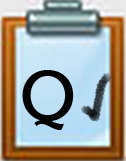Quest 2 Safe Searching Introduction
Introduction
Congratulations on your successful completion of Quest one.
You have just learned how to do a search in Mel.org and now you are going to learn how to gather information using a search engine.
After completing this Quest you will know how to filter your results and find the most relevant information.
You will want to watch the video to the right first to learn how to narrow down your searches so that you don't get millions of results when you use Google or another search engine.
I Can Statements
- filter and narrow down results using Boolean Logic
- search safely
Boolean Searching (2:41)
Competencies & Standards
MITECS Michigan Integrated Technology Competencies for Students, and
1. Empowered Learner
d. Understand the fundamental concepts of technology operations, demonstrate the ability to choose, use and troubleshoot current technologies and are able to transfer their knowledge to explore emerging technologies
2. Digital Citizen
b. Engage in positive, safe, legal and ethical behavior when using technology, including social interactions online or when using networked devices
c. Demonstrate an understanding of and respect for the rights and obligations of using and sharing intellectual property
3. Knowledge Constructor
a. Plan and employ effective research strategies to locate information and other resources for their intellectual or creative pursuits
b. Evaluate the accuracy, perspective, credibility and relevance of information, media, data or other resources
c. Curate information from digital resources using a variety of tools and methods to create collections of artifacts or solving authentic problems
d. Build knowledge by actively exploring real-world issues and problems, developing ideas and theories and pursuing answers and solutions




